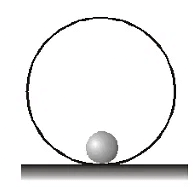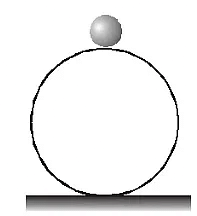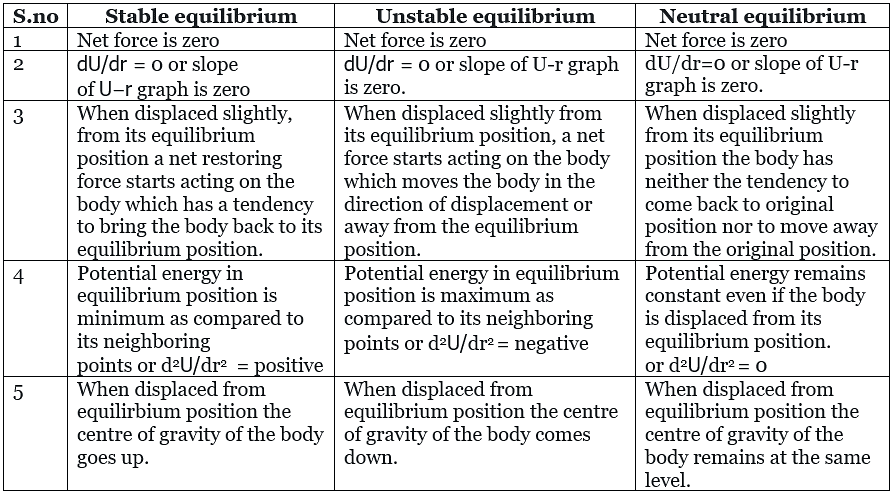Grade 9 Exam > Grade 9 Notes > AP Physics 1 > Equilibrium & its Types
Equilibrium & its Types | AP Physics 1 - Grade 9 PDF Download
Introduction
A body is said to be in translatory equilibrium if the net force acting on the body is zero,
If the force are conservative then F = - dU/dr
For equilibrium F = 0.
So, - dU/dr = 0
Or
dU/dr = 0
At equilibrium position slope of U-r graph is zero or the potential energy is optimum (maximum or minimum or constant).
Types of Equilibrium
Equilibrium can be classified into three distinct types: stable equilibrium, unstable equilibrium, and neutral equilibrium. Let's explore each type in detail.
- Stable Equilibrium: When a particle is slightly displaced from its equilibrium position and it tends to return back towards equilibrium, it is considered to be in stable equilibrium. This means that there is a net restoring force acting on the body, which counteracts the displacement and brings the body back to its original position. Imagine a ball placed inside a smooth spherical shell. When displaced, it will eventually roll back to its equilibrium position due to the stable equilibrium it experiences.

- Unstable Equilibrium: Contrary to stable equilibrium, unstable equilibrium occurs when a particle is displaced from its equilibrium position and tends to move away from it. In this case, the net force acting on the body drives it further from its original position. Picture a ball perched atop a smooth sphere. Even the slightest disturbance will cause the ball to roll away from its equilibrium position, illustrating the nature of unstable equilibrium.

- Neutral Equilibrium: Neutral equilibrium occurs when a particle is displaced from its equilibrium position, but no force acts on it to bring it back or move it away. In this scenario, the body remains in its new position without any tendency to restore or alter its location. Consider a ball placed on smooth horizontal ground. If it is slightly displaced, it will stay in its new position without any force acting upon it. This exemplifies neutral equilibrium.

Difference Between Stable, Unstable, and Neutral Equilibrium

The document Equilibrium & its Types | AP Physics 1 - Grade 9 is a part of the Grade 9 Course AP Physics 1.
All you need of Grade 9 at this link: Grade 9
|
48 videos|69 docs|30 tests
|
Related Searches















